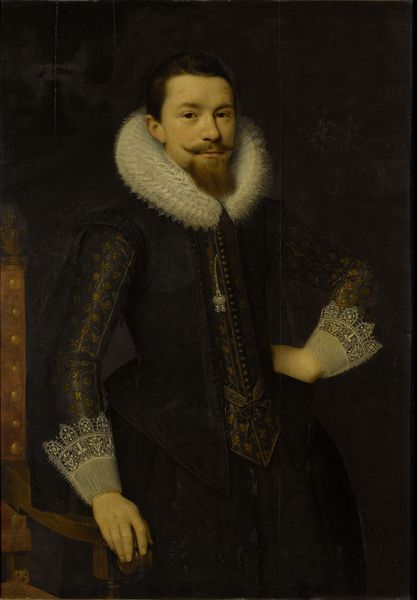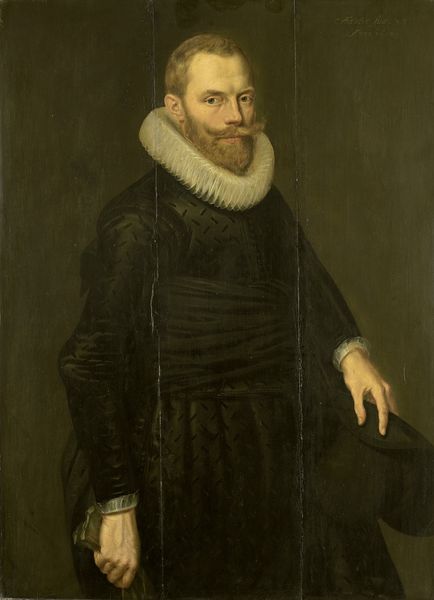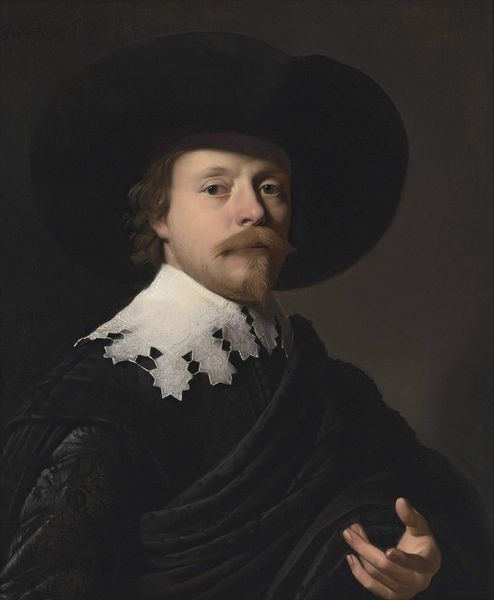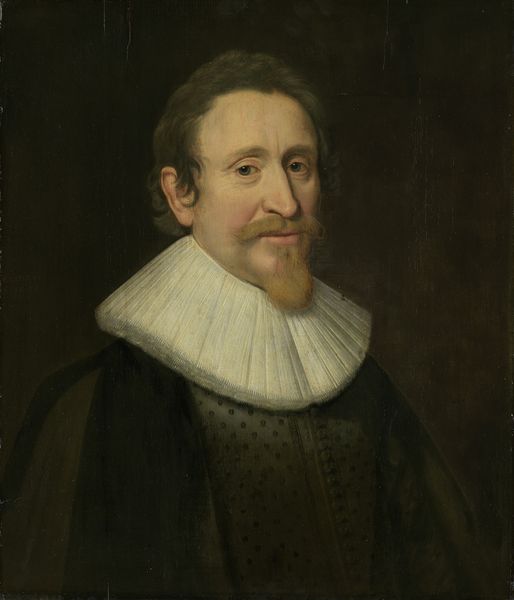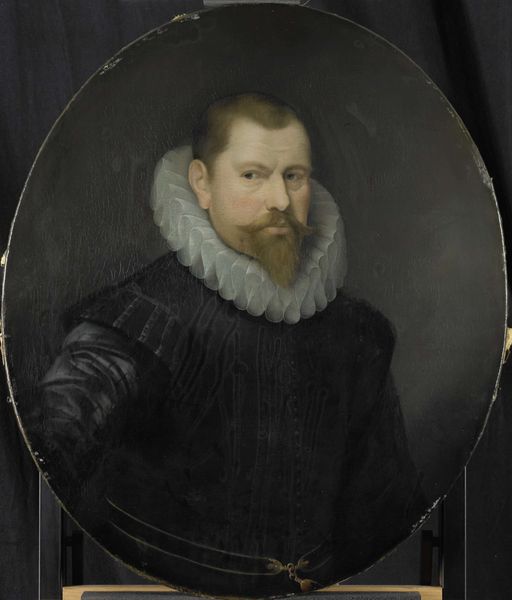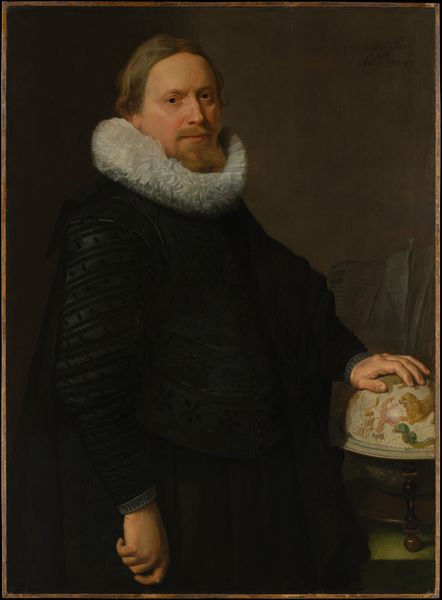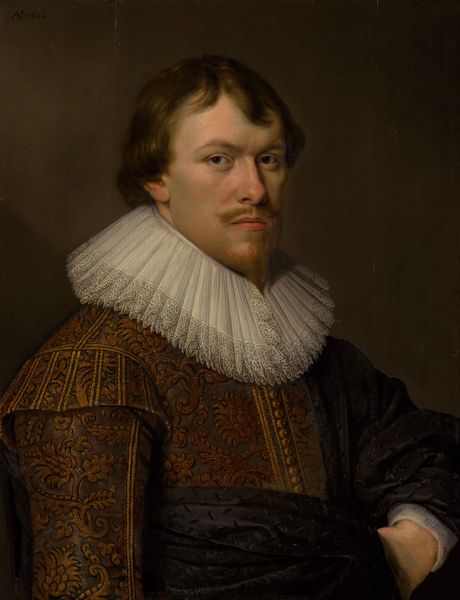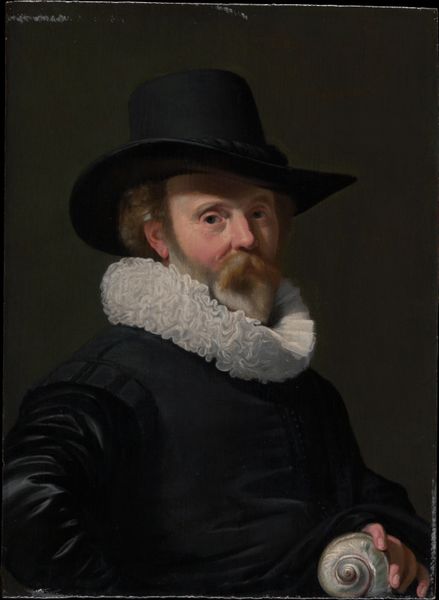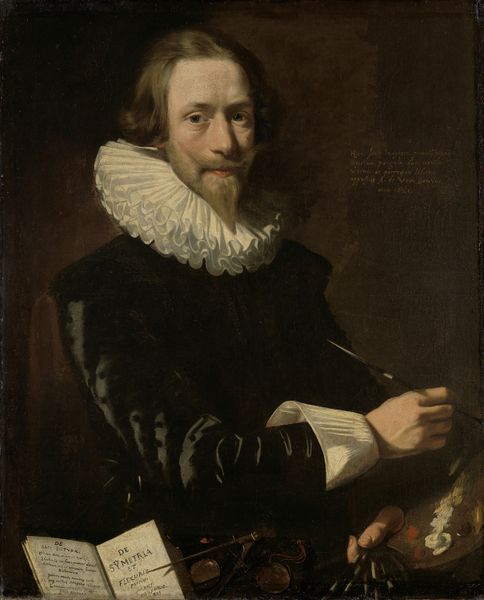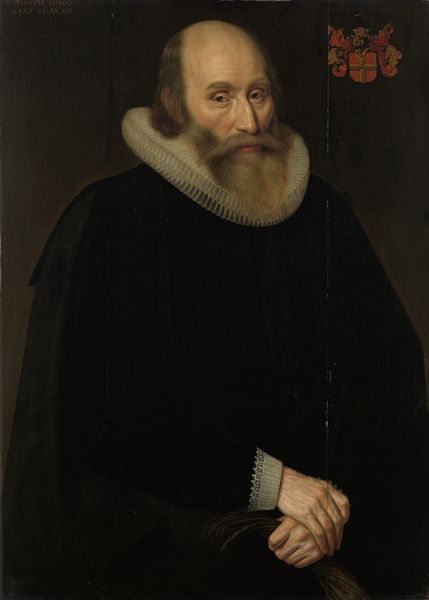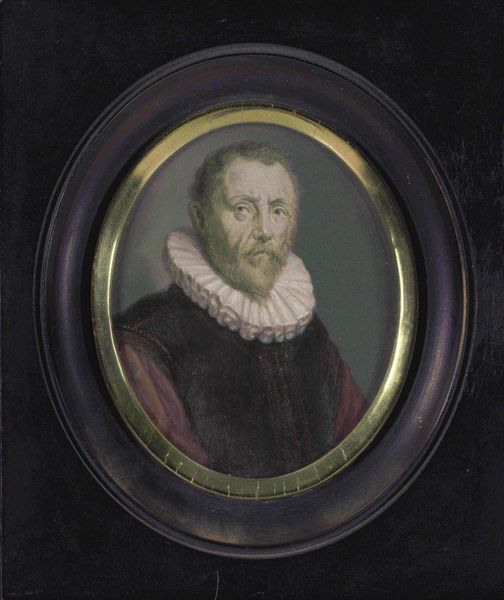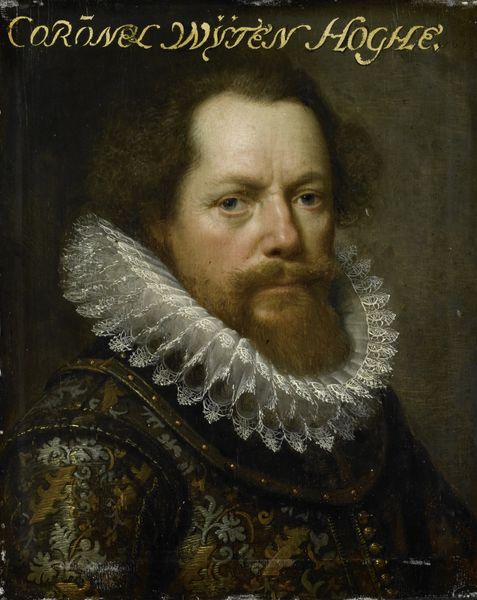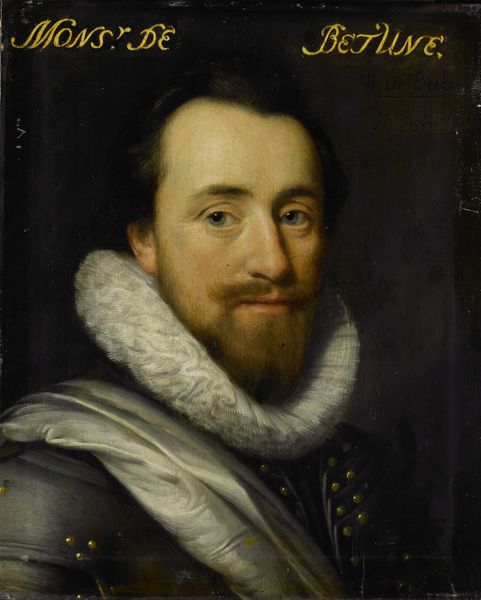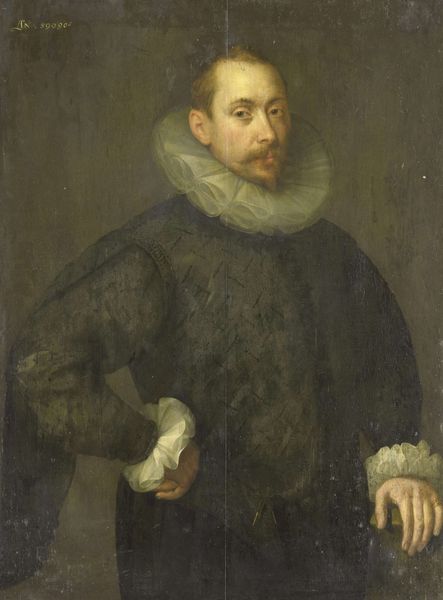
painting, oil-paint
#
portrait
#
baroque
#
painting
#
oil-paint
#
history-painting
Dimensions: support height 94.7 cm, support width 69.1 cm, outer size depth 7 cm
Copyright: Rijks Museum: Open Domain
Editor: Here we have Salomon Mesdach’s "Portrait of Jacob Pergens," painted in 1619 with oil on panel. The detail in the ruff and cuffs is incredible! What really strikes me is the sitter’s gaze. It's…reserved, maybe a bit skeptical. What do you see in this portrait? Curator: Indeed, the exquisite details capture the societal pressures placed upon wealthy men. It’s easy to read the sitter’s expression and pose at face value, but I encourage us to contextualize wealth and status within 17th century power structures. Do you consider how gender and class intersect to form our understanding of masculinity at this time? Editor: That’s an interesting point. I guess I hadn't considered the intersectional dynamic. Could you expand on how those power structures might be at play here? Curator: Consider the attire: the meticulously crafted ruff, the intricate lace cuffs, the rich fabric of the coat. All coded signifiers, right? In Mesdach's time, these items visually separated the elite from the rest. Yet, it’s the man’s subdued posture—his attempt to control himself and his image—that interests me the most. He becomes both a performer *and* product of patriarchy. Editor: So, you are saying the sitter, Jacob, becomes a subject that must internalize patriarchal systems? That it wasn’t enough just to be wealthy; he also had to embody an acceptable form of masculinity? Curator: Precisely! He, along with others of his standing, needed to perform roles upholding hierarchical structures based on gender and social class. By doing so, they would further legitimize power imbalances. The portrait then isn't merely about representation, but also power relations. Editor: This completely reframes my perspective. Thank you for that historical and sociological context. It makes me think differently about portraiture of the time. Curator: And for me, your response reminds us that even seemingly straightforward portraiture reveals much more upon deeper inspection and inclusive analyses.
Comments
No comments
Be the first to comment and join the conversation on the ultimate creative platform.
